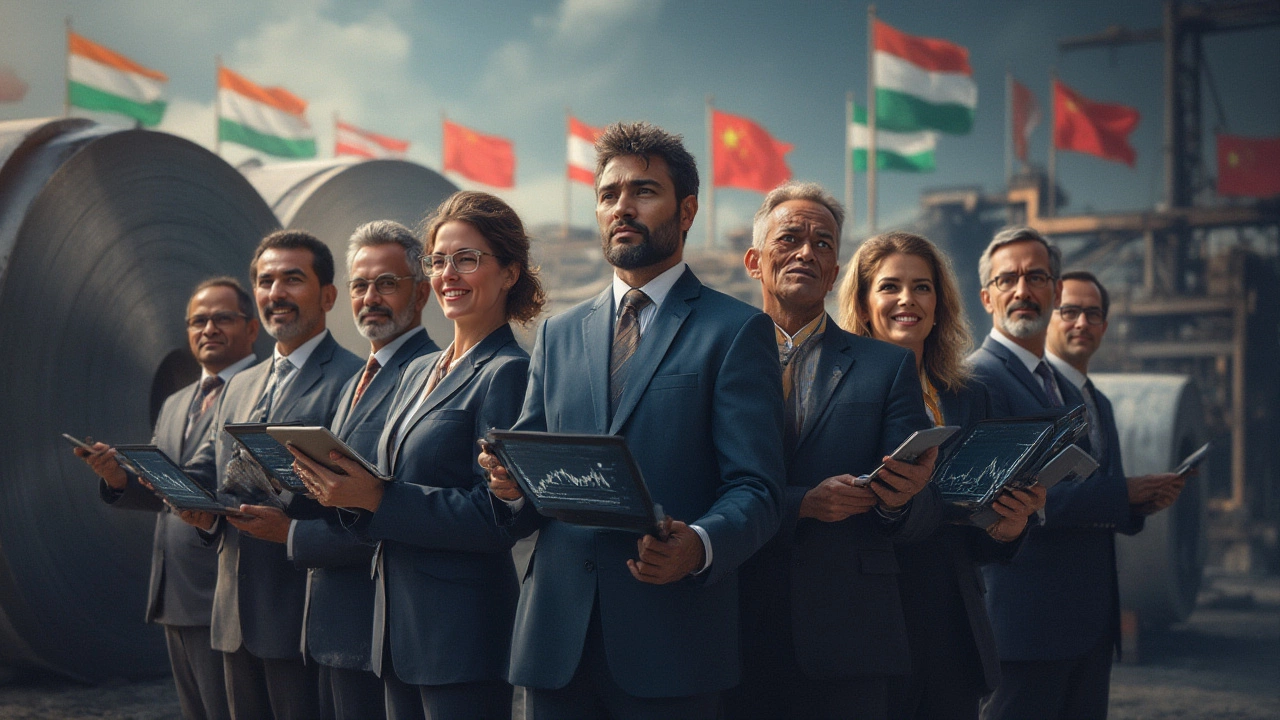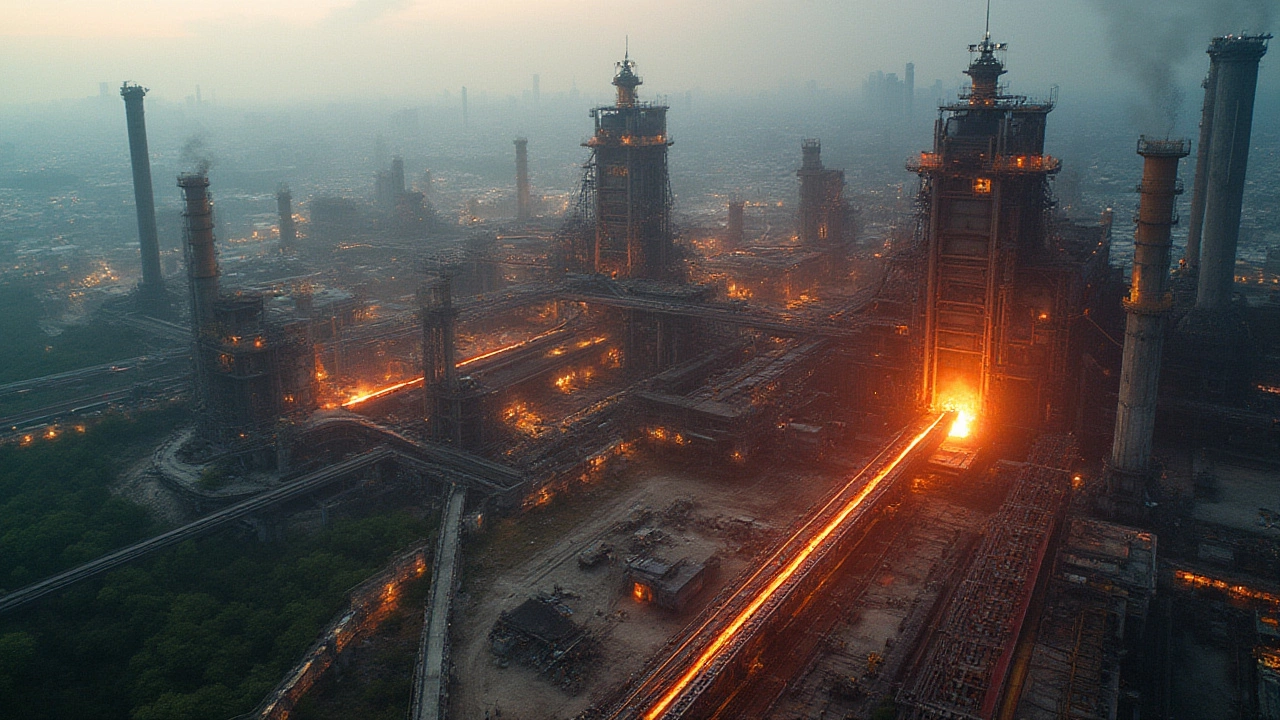Think your smartphone or car has nothing to do with world politics? Think again. The story of who runs the steel industry is wild, almost like a Game of Thrones with iron instead of dragons. Steel is everywhere—inside buildings, bridges, vehicles, even the razor you used this morning. That hidden backbone of civilization? It’s fiercely fought over by nations, billionaires, and multinational companies with names you probably see stamped on shipping containers or skyscraper frames—if you look hard enough.
How Did We Get Here? The Rise and Fall of Steel Titans
Steel wasn’t always a worldwide tug-of-war. In the late 1800s, men like Andrew Carnegie turned regions like Pittsburgh into steel powerhouses, churning out the metal that built everything from railroads to skyscrapers in the United States. U.S. Steel became so massive, it was once considered the world’s first billion-dollar company. Fast forward, and the map of steel dominance shifted east. Japan's Nippon Steel took off after WWII, modernizing rapidly and pushing the rest of the world to sweat.
But the real fireworks started in the late 20th and early 21st centuries, when China decided it wanted a slice—and then the whole pie. In 2000, China made less steel than the European Union. By 2023, it produced nearly 55% of global crude steel output, according to the World Steel Association. Thanks to aggressive infrastructure projects, urbanization, and sheer industrial capacity, Chinese companies like China Baowu Steel Group turned massive profits, dwarfing European and American competition.
The European titan ArcelorMittal emerged in the early 2000s after a whirlwind of mergers, and although headquartered in Luxembourg, it has strong roots in India, Brazil, and beyond. Still, Chinese producers now rule the roost, snapping up plants, buying raw materials worldwide, and sometimes undercutting prices at a scale others just can’t match. How big is the gap? Here’s a table showing crude steel output for 2023 (from the World Steel Association):
| Producer (Country) | Crude Steel Output (Million Tons, 2023) |
|---|---|
| China Baowu Steel Group (China) | 132 |
| ArcelorMittal (Global) | 70 |
| Ansteel Group (China) | 55 |
| Nippon Steel Corporation (Japan) | 44 |
| Jiangsu Shagang (China) | 41 |
The names may not roll off your tongue, but their fingerprints are on everything from your refrigerator to the Olympic stadiums. The crown has clearly moved east, shaking up workforce patterns, economies, and even environmental debates.
The Big Players: Countries and Companies in the Steel Ring
Let’s be honest—steel’s a global drama with some blockbuster stars. Nobody’s out-muscling China. The country’s industrial growth was so epic, it built more skyscrapers in a decade than the U.S. did in a century. As of 2025, China Baowu Steel Group stands as the undisputed giant, often producing more than the next three competitors combined. Ansteel and Shougang, both state-backed Chinese companies, follow close behind. Their secret? State support, scale, and a single-minded focus on dominating the supply chain from raw ore to finished beams.
Outside China, ArcelorMittal is the only player operating on a truly global scale—plants in Europe, India, Africa, and the Americas. They’re quick to pivot: when European demand dipped, they shifted steel plants to India and Brazil, chasing faster-growing markets. Nippon Steel, headquartered in Tokyo, packs a punch with a focus on high-tech applications—think super-strong automotive steel or eco-friendly production methods. Tata Steel (India), POSCO (South Korea), and JFE (Japan) round out the non-Chinese heavyweights, but none match China’s capacity.
On the flip side, the once-mighty United States has lost much of its influence, now ranking behind countries like India and Russia in steel production. The reason? Aging plants, trade disputes, and intense competition from lower-cost producers abroad. According to the U.S. Geological Survey, the U.S. produced about 80 million tons in 2023, a fraction of China’s output. India is worth watching—Tata Steel is gobbling up overseas mills and investing in green tech, while new plants in India crank out products that reach global automakers and architects alike.
“Steel is now as much about political strategy as it is about industrial capacity. China’s dominance isn’t just an economic issue—it reshapes the entire global trading system.”
— Maximo Vedoya, CEO of Ternium (2024 speech at World Steel Dynamics)
Meanwhile, European steel heavyweights juggle environmental rules with the need to compete on price. Germany’s Thyssenkrupp and France’s ArcelorMittal are betting big on hydrogen steel-making, hoping that being clean will give them an edge.

The Supply Chain Chessboard: Resources, Trade Wars, and Technology
It would be nice to think the biggest producer wins by just having the biggest furnaces, but steel is much messier. The world’s largest steelmakers fight for control over iron ore and coking coal—the two ingredients no electric arc furnace can live without. Australia’s iron ore, Brazil’s mines, and Mongolia’s coal fields are all part of the real-life chessboard. China imports over 70% of its iron ore, mostly from Australia. That reliance has led to economic tension, tariffs, and behind-the-scenes deals.
Tech is the next area of battle. Traditional blast furnaces guzzle energy and pump out CO2 like there’s no tomorrow. New methods use electric arcs or even hydrogen, slashing emissions. Nippon Steel recently built a plant in Kimitsu that cuts emissions by 20%—not a world record, but a serious sign that the industry is changing. The EU is pushing a “Carbon Border Adjustment Mechanism,” basically charging a fee to imported steel with higher emissions, hoping to protect its cleaner, but pricier, products. The U.S. has responded with tariffs and “Buy American” pushes in infrastructure.
Steel isn’t just about building stuff. Think about it: your EV’s lightweight body, sleek bridges, earthquake-resistant skyscrapers—none exist without specially-made steels. Some companies focus on super-thin sheets for batteries, others on beams that resist corrosion in salty air. It’s not just making more steel, but making smarter steel. Companies try to lock in customers by working directly with carmakers or shipyards. The best-known example? POSCO’s deal with Tesla, developing advanced high-tensile steel for the Model Y, giving Tesla an edge on weight and strength.
There’s another twist. A huge chunk of steel today is recycled—close to 30% worldwide. Electric arc furnaces melt scrap, a boon for countries without mineral resources. Turkey and South Korea excel here, turning global waste into new metal. That means if you want a true picture of dominance, you can’t just count raw tonnage. Who controls the scrap flows? Who has the best recycling facilities? Those are new levers of power that matter.
Tomorrow’s Giants: Green Steel and Shifting Battlegrounds
If you think the steel game is settled, think again. The next round won’t just be about who makes the most, but who makes the cleanest—or who can get it closest to where it’s needed fast. The EU is pouring billions into "green steel" projects—hydrogen-powered plants, carbon capture, smarter furnaces. In 2024, Sweden delivered the world’s first batch of completely fossil-free steel to Volvo—tiny compared to global output, but a historic move.
China’s government, meanwhile, is setting unprecedented goals: peaking emissions before 2030 and going carbon-neutral by 2060. That forced even their biggest companies—think Baowu and Ansteel—to scramble for new low-carbon tech. India is rolling out partnerships for green hydrogen, while the U.S. gives tax credits for carbon-slashed production. PricewaterhouseCoopers reports that buyers—especially car companies—are already paying 10-15% more for verified green steel as of 2025.
Tech is also shifting the map. “Mini-mills” can now pop up closer to where steel’s needed, using scrap and electric arcs instead of shipping heavy raw materials across oceans. This local flexibility could start to erode the power of the biggest, most centralized plants. Startups in the U.S. and Europe are experimenting with AI in smelting, predicting demand, reducing waste, and saving energy in ways the old titans never dreamed of. As all this unfolds, whoever can adapt—combining scale, clean methods, and smart supply chains—will set the pace.
So, who dominates the steel industry? Today, it’s China and its national champions by miles. But the real muscle may soon belong to whoever figures out green steel at scale—and gets it to the right place, just in time. In this industry, the only constant is change. Watch this space—because the next king of steel could come from a place, or a company, you’d never expect.
